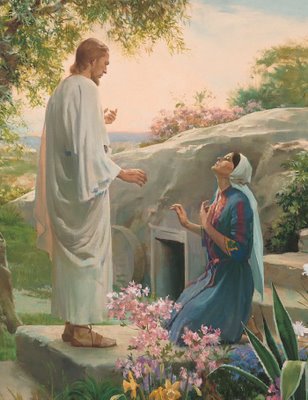In Isaiah 5, Isaiah combines parable, warning, and promise together with poetry and irony in an effort to portray the Lord’s work with the children of Israel. This chapter contains the themes reflected in the first four chapters of Isaiah and serves as a transition between chapters 1-4 and the prophet’s calling in Isaiah 6. In the parable of the vineyard, Isaiah illustrates that although the Lord has done everything possible for his people, they continue to find ways to reject him.
Isaiah 5 concludes with the promise of an ensign to the nations, a gathering of Israel, and a mighty army of soldiers (missionaries) bringing peace to Israel; a similar message is outlined in Isaiah 2 and 4. This chapter summarizes Isaiah’s earlier teachings and completes the set of introductory chapters to his book.
Isaiah 5 can be placed into three sections:
1. Isaiah’s parable of the vineyard (v.1-7)
2. Six pronouncements upon the wicked of Israel (v. 8-25)
3. Promises of an ensign, gathering, and an army (v. 26-30)
There are many ancient accounts depicting the God of Israel as a gardener (David Bokovoy, “Ye Really Are Gods”: A response to Michael Heiser concerning the LDS use of Psalm 82 and the Gospel of John, Farms Review: Volume 19, issue 1, pgs 267-313). In fact, Adam is a type of his master who will continue to perform the work of Yahweh who “planted” the garden in Eden. We see this gardener imagery here in Isaiah 5 as well in other places in scripture – notably Jacob 5 where the Lord of the vineyard is Christ and the olive trees represent the House of Israel.

It is also worthy to note that the first mortal to see the resurrected Christ made the assumption that he was the gardener (John 20:14-18). I do not believe this to be in the text by chance. This imagery reminds us that we are to create an Eden like state on earth, to follow the Savior in creating another Eden. Even in the cultivating of our testimonies, this imagery is used (see Alma 32).
It was worth our time to spend some time after reading the bulk of this chapter to make some personal application in the lives of the students. After reading Isaiah’s parable, pronouncements and prophecies, we looked at what God does for vineyard.
From the text we read:
“My wellbeloved hath a vineyard in a very fruitful hill: And he fenced it, and gathered out the stones thereof, and planted it with the choicest vine, and built a tower in the midst of it, and also made a winepress therein: and he looked that it should bring forth grapes, and it brought forth wild grapes” (Isaiah 5:1-2).
I asked the students, “Okay, you are the vineyard. Look in verse 7- clearly we are talking about Israel, and in this sense let’s personalize this and just talk about you. What do you see the Lord doing for you?”
Eventually several students will have highlighted what the Lord has done for them as depicted in this verse. Typically the list includes:
1. The Lord builds a fence around me, or puts up one in my life.
2. He gathers out the stones.
3. He plants in my life the “choicest vine”.
4. He builds a tower in my life.
5. He placed a winepress in my presence.
We spent considerable time in class looking for how this applies in the lives of young people. Many came away sharing how the fence could represent loved ones who set up boundaries in their lives. Some students made the analogy to the For the Strength of Youth, and how the boundaries set therein apply to their lives, protecting them from harm.
Many students shared examples of the Lord taking out stones from their lives. One young lady shared how her move to another town was a great stone taken from her. Perhaps the stone removal could be compared to the Savior’s desire to take our sins, our burdens, away from us if we but allow him to do so.
The choicest vine could represent other people that point us in the right way: friends, parents, and Church leaders who love and care for us in wonderful and caring ways. Many students shared their feelings for those that have had an impact in their lives.
To me the tower represents the temple. When we attend the temple, we are protected in ways the world cannot provide. The temple gives us the vision we need to carry on in this mortal world with its intense challenges and noise.
Finally, we spent some time talking about the winepresses of youth. From time to time in our mortal experience we all go through times that try our souls. The first four elements of the parable can prepare us for the winepresses of our second estate. May we all have the faith to carry on in a manner that would make the Savior say, “blessed art thou; for because ye have been diligent in laboring with me in my vineyard… ye shall have joy with me” (Jacob 5:75).
